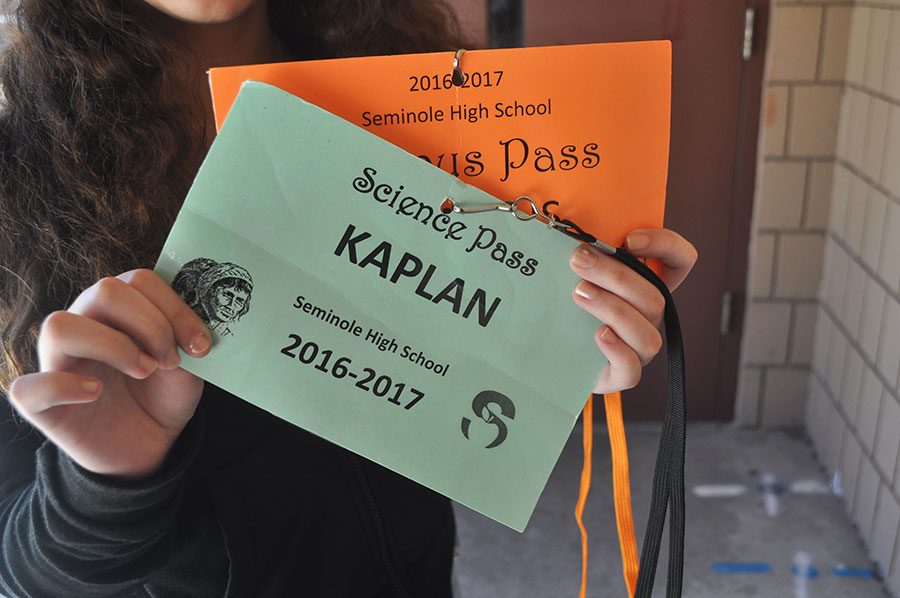NEW PASS POLICY INEFFICIENT
The new pass policy has been surprisingly ineffective.
February 13, 2017
On Jan. 9, a new pass policy was put into place to ensure the location of students. Instead of the prior usage of planners as passes, two different passes that are color-coded to indicate where the student should be have been substituted. However, this policy may be of a wasted effort to monitor students.
Each classroom has two stationary passes that are color-coded according to where the student should be. Every building has one orange pass called the Campus Pass that allows a student to be anywhere on campus. The second pass has a specific color and name that varies in accordance with the building. It limits a student to a particular area in proximity to the classroom and is also used as a bathroom pass.
To go along with the new pass policy, students have a sign in/sign out paper that they have to fill out so the teacher can monitor how many times the student leaves and for how long. Teachers also have to fill out a separate paper that individually tracks each student.
“[The pass policy is] not only a safety and security resolution, but it’s also an organization system to help teachers manage who’s out of their classrooms,” said administrator Dr. Nicole Wysong. “It helps security and administration know where everybody is supposed to be.”
However, the passes can be inefficient. The Campus Pass, for example, does not inform the administrator or security guard if the student is in the right building. Therefore, they would not be aware if the student is in the correct location unless they stopped and asked them.
Furthermore, the passes do not specify how long the student should be outside of class so administrators and security would not know if the student should be back in class. Students have the tendency to lose things so having just one pass for each classroom can result in misplacement. In order to bypass this issue, teachers are required to add an orange lanyard to the Campus Pass and a black lanyard to the other pass to distinguish between the two.
Not only are the passes ineffective, but they are also unhygienic. Since each classroom only has one of each pass, germs can easily spread from student to student. The pass used for the bathroom is particularly unsanitary because public bathrooms are not the most clean places. Researchers at San Diego State University found that 68 percent of the microbes found in public bathrooms are skin bacteria and outdoor bacteria. With students using the same pass, germs and bacteria would be all over the passes, being unclean for the next student.
The previous usage of planners as students’ passes may be more preferred in terms of health concerns, but the new passes allow a faster exchange between the student and the teacher without the student interrupting class time.
“The planner was a bit of a hassle for the student and the teacher,” said teacher Dr. Paul Becht. “This pass policy that they have now says you have a little card that you carry and all you do is sign in and sign out. It’s a much quicker response and I think it’s more equitable.”
Despite the passes being unsanitary and somewhat faulty, the passes do serve as a better way for administration and security to monitor students.
“[The pass policy] is good especially for all security because now it’s noticeable,” said security guard Nelson Hilerio. “I can see that a student has a pass so I know that they are going out with permission.”
The new pass policy may have been more efficient in monitoring students outside of their classroom, but the inadequate and unsanitary nature of the passes should be of a concern to students and faculty.



















